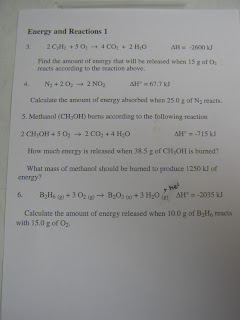Today we went to the auditorium for chemday to watch an episode of MythBusters called Crimes and Myth-Demeanors 2.
The teachers handed out a paper with the questions related to the show.
Here are the following questions:
1. The fingerprint lock is an optical sensor.
2. What do Jamie and Andy have to do in order to break into Grant’s lock?
They need Grants fingerprint.
3. Which method of lifting prints works?
They added powder to the glue print.
4. Why doesn’t the paper print work?
It’s not three- dimensional.
5. In thermal motion alarms, what sets off the alarm?
Infrared energy
6. Why did Tory set off the alarm?
His body heat was picked up by the alarm.
7. What problems are involved with using a CO2 extinguisher to cool Tory?
It would be difficult to have a consistent temperature in the body because it’s just going to be a blast. So he can just heat it right back up in the middle of the room. Also it is dangerous can it can cause frostbite.
8. Which material was more like human skin? Did it work?
They use a Ballistics gel. But no it didn’t work because the ridges are not deep enough.
9. Was the Team able to covertly get Grant’s fingerprint?
Yes, Carrie is able to get Grant’s fingerprint by using a cd case.
10. Why does the second print work?
The lines of the fingerprints are clearer.
11. Why did the neoprene suit set off the alarm?
The longer Tory wears the suit the heat from his body is transferred in the suit.
12. Did the Predators method of pasting yourself with mud fool the alarm?
No, because the body heat warmed up the mud. Also there are mud tracks left.
13. How did Adam’s fingerprint work?
They made a latex copy that is planted on his heated thumb and then he licked it.
14. What happened with the photocopy print?
They are able to get in.
15. What happened when they increased the room temperature?
A huge hot stream is flowing in the room setting off the alarm.
16. Did a near naked Grant fool the alarm?
No, because the alarm is just too sensitive.
17. How does the big pane of glass work?
The glass can block the infrared of the body.
18. Did the glass method work?
Yes
19. What is glass- re- locker?
A pane of breakable glass within the safe itself that if broken activates locks that makes the door impenetrable.
20. How many milliliters of nitroglycerine does Adam think he needs?
140 ml of nitroglycerine
21. Where are they testing the safe?
They are doing their test at a sewage plant.
22. How big is the glass in the actual safe?
The size is a small glass in the middle of the safe.
23. What are the five steps to blow up the safe?
Step 1, is to bore a hole in the top of the safe with a thermo lance. Step 2, is to fill the safe with water. Step 3 is to lower explosives into the safe. Step 4 is to blow the door of the safe and step 5 is to get the money and run.
24. What was the problem when they burned a hole in the safe?
It also burned everything in the safe.
25. How does the ultrasonic motion detection work?
It sets out a very high frequency sound wave which bounces off in all the wall of the room and comes back to the sensor to create a pattern.
26. What material soaks up the sound?
A thick rug.
27. Does Carrie’s bird suit work?
No it didn’t.
28. Does the bed sheet work? Why?
Yes, because the bed sheet is actually absorbing the sound wave.
29. What was the last method used to fool the alarm? Why does it work?
The last method is to slowly walk in the room. This method worked because the sensor has a threshold level of movement that needs to trigger it.
30. Were Adam and Jamie even able to copy the safe breaking Crime?
Yes
REMEMBER THE HW ON THERMOCHEMISTRY WHICH WE WILL GO OVER ON MONDAY.




 Our homework for tonight is to study for tomorrow's test. Also, make sure all the pages in your journal are finished!
Our homework for tonight is to study for tomorrow's test. Also, make sure all the pages in your journal are finished!




















 Our homework for tonight is page 4 Heat Calculations 3 that we picked up in the beginning of class.
Our homework for tonight is page 4 Heat Calculations 3 that we picked up in the beginning of class.




 on journal page 4, remember when something is increased or decreased, you do the
on journal page 4, remember when something is increased or decreased, you do the 





